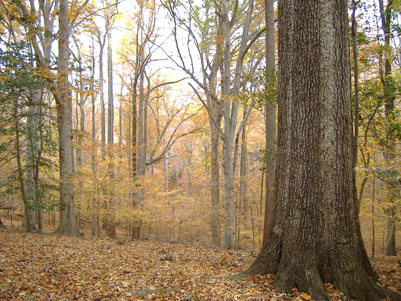
In addition to celebrating individual Virginia Trees, the Remarkable Tree Project will be identifying and celebrating some of the best places for the public to see trees in Virginia. These can include parks, college campuses, arboreta, cityscapes, and other properties where the public can go to see fine tree specimens and tree landscapes. Please nominate your favorite tree places by sending a picture and a description to Tracey Sherman.
The Caledon State Park is a 2,587 acre tract of forest land that adjoins the Potomac River on the northern neck of Virginia. Oaks and tuliptrees in the Area are 200 - 250 years old.

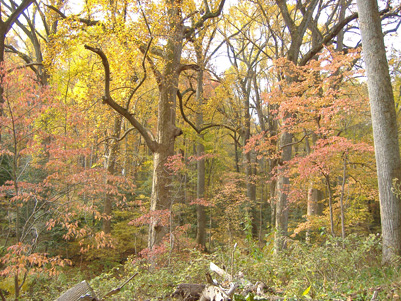
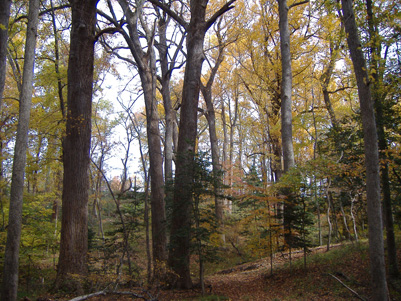
The Cedars is a topographic lowland region located in extreme Southwest Virginia. The extensive karst terrain of The Cedars has been rated as one of seven significant karst areas in Virginia. Landscape features include sinkholes, caves, springs, and sinking streams. Within The Cedars there are:

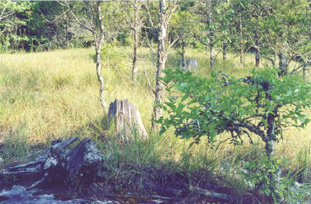
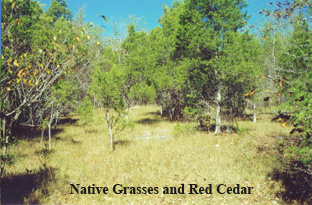
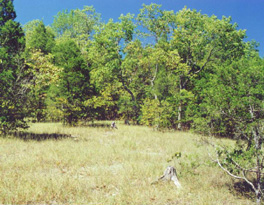
The Craig Creek Old Growth Stand is located in the Jefferson National Forest, Montgomery County. It was one of six Virginia old-growth stands described in a 2002 MS thesis by Lawton Grinter, a Virginia Tech graduate student. The 25 acre stand is characterized by 200+ year old white oak.
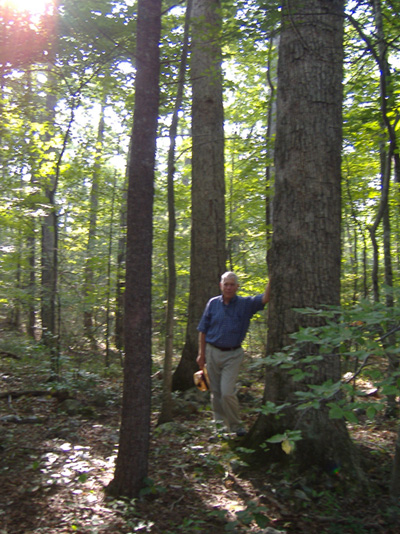
Cumberland Gap National Park is Virginia's other National Park. Often overlooked in favor of Shenandoah National Park, this park straddles three states and marks the migration route for hundreds of thousands of early settlers who sought new land west of the Appalachians, as well as American Indians before them that used Wilderness Road to access hunting grounds. It is hard to believe that Cumberland Gap was completely and deliberately denuded of trees so that enemy soldiers could be seen by artillery forces placed along the ridge.
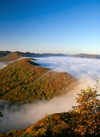
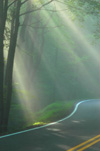
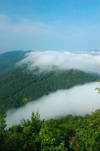
Photos by Harold Jerrell, Lee County, VA, Extension Agent.
Follow the Baldcypress Trail (complete with viewing platforms) to see baldcypress trees in their natural swamp habitat. Of interest are baldcypress knees and hanging Spanish moss that make the area unique. The baldcypress trees increase the acidity of the water by leeching out tannic acid. Explorers and pirates depended on the cypress swamps for water because the acidity of the tannin would keep the water fresher while at sea. Nominated by Staci Martin, District Program Specialist, Virginia State Parks.
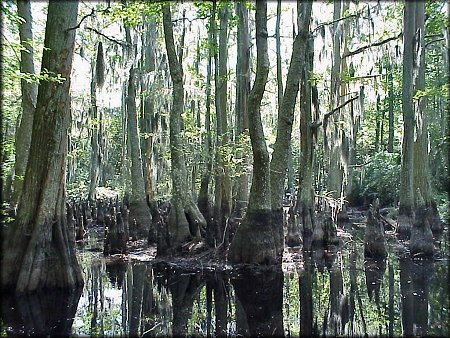
As the first National Monument in the east in 1930, intensive colonial revival and landscape preservation efforts resulted in the planting of groves, allees, and gardens to commemorate the birthplace of our Nation's first president. The park may have specimen trees such as a hackberry and several blackgums approaching 200 years of age, a white mulberry, and a loblolly/willow oak association.
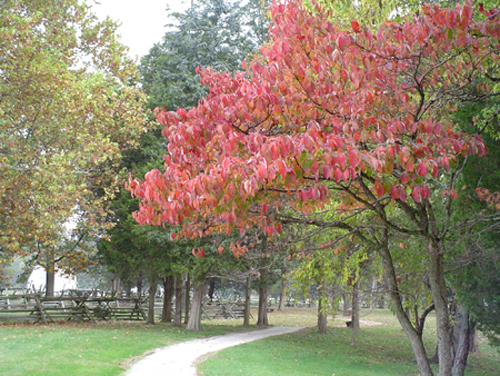

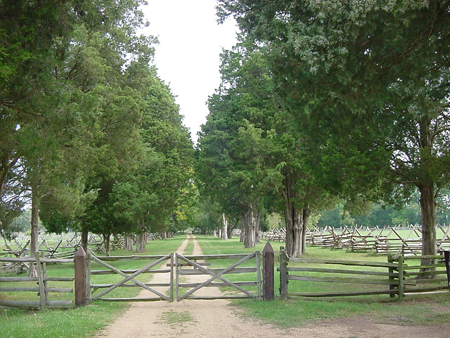
Great Falls National Park has an old-growth stand that has been studied and described by scientists. White oaks there have been dated to the 1740's. The forest has other characteristics of old growth such as the appearance of coarse woody debris, and trees that represent different age and size classes.
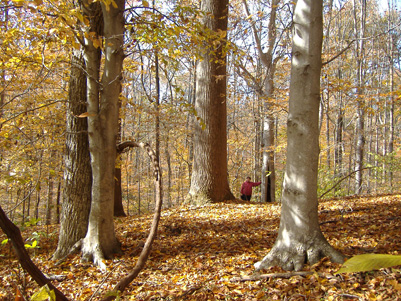
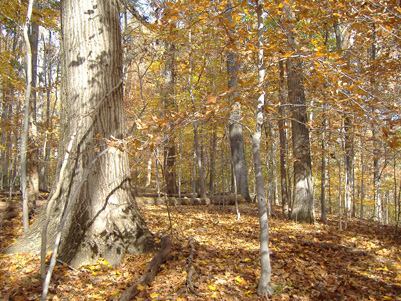
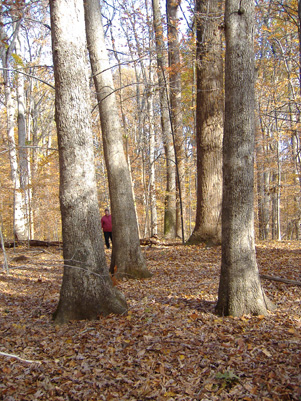
In February of 2006, 50+ acres of land was replanted, through the assistance of The Nature Conservancy, with species native to a maritime forest and meeting the needs of the migratory bird population on the Eastern Shore. This presents the unique opportunity of seeing a forest take shape over the years. Particularly, visitors can take photographs of themselves and their children in the same spot through years as they grow and the trees grow. How cool is that? Nominated by Staci Martin, District Program Specialist, Virginia State Parks.
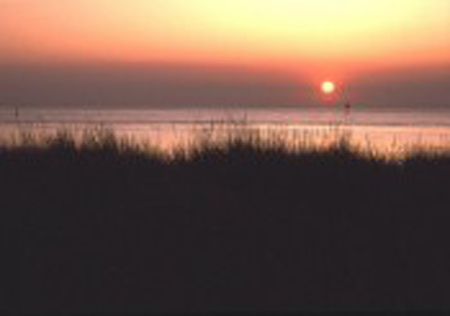
Located in historic Fredericksburg, the University of Mary Washington has long been recognized for its beauty. The urban campus provides an oasis of nature, with its undisturbed wooded acreage and carefully landscaped grounds providing habitat for a variety of wildlife. UMW hosts trees that were witness to Civil War battles and surely indigenous life before, with hundreds of specimens representing over 75 genus and species. The extensive network of walkways enhances the opportunity to view specimens featuring 300 year old oaks and a variety of hardwood, evergreen and flowering trees from Amur corktree to Japanese zelkova. Many of the trees are labeled with family, genus and species, allowing the visitor an educational insight to the campus landscape.
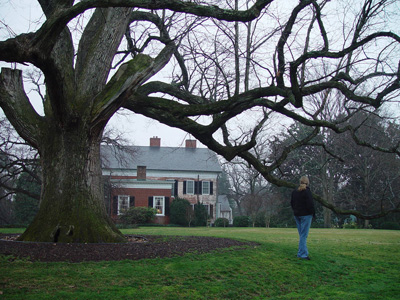
Maymont's one hundred acres are populated with thousands of stunning trees and shrubs, notable for their size and beauty, and for more than 200 exotic species imported by the Major Dooley in the early 20th century. The size and age of many of the exotic specimens indicate that they were carefully placed to allow for optimum future growth. Among these are the Japanese false larch and Chinese white enkianthus.
In 1986, Maymont's tree collection was recognized by tree experts as one of the country's notable arboretums. In a 1982 Museum Assessment Program survey report, Gordon Tarbox, Jr., Director of Brookgreen Gardens, noted that the magnificent tree collection could not be duplicated in one hundred years. Today, Maymont's Arboretum is home to several exotic champions; including the Blue Atlas cedar, Japanese cryptomeria, European vineleaf linden and Persian ironwood.
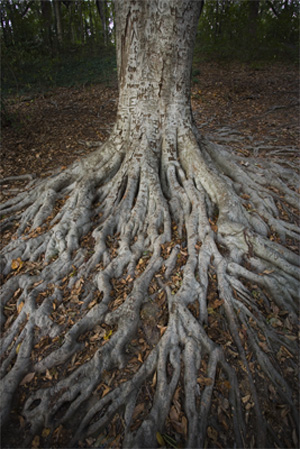
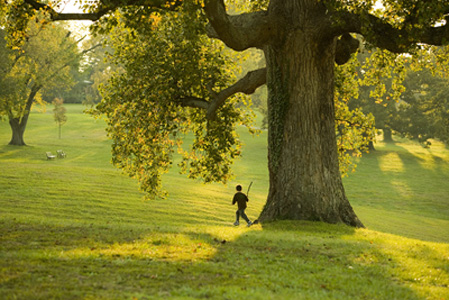
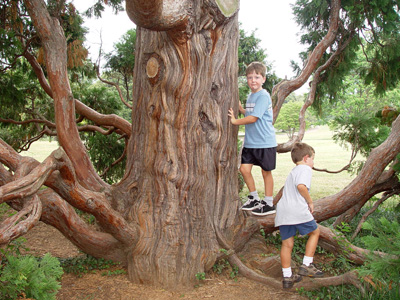
Norfolk Botanical Garden is a great place to see trees. The 155 acre public garden started during the 1930's. At that time, the Director was a fantastically knowledgeable plantsman. There are many state champion trees and unusual specimens. Some highlights include several large coast redwoods, many old Japanese snowbell (including the state champ) and kousa dogwoods. The 17.5 acre flowering arboretum is especially a treat in spring with cherries, crabapples, redbuds, and buckeyes blooming.

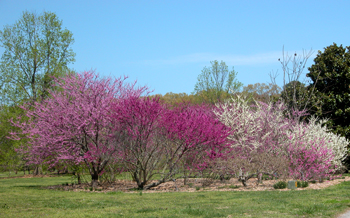
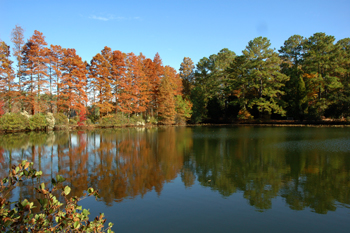
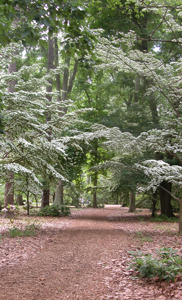
Located in Mecklenburg County along the shores of Buggs Island Lake (the largest man-made impoundment in Virginia), the park has 2000+ acres of mostly undeveloped woodland. Forest types include many acres of mixed old growth hardwood (oak/hickory) and pine stands. Nominated by Scott Shanklin, Park Manager.
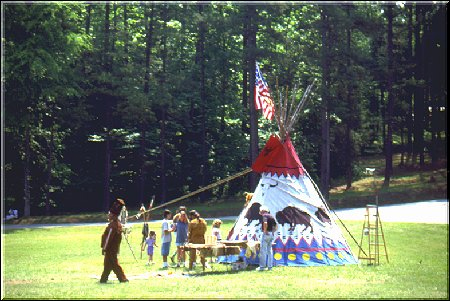
The grounds at Old Dominion University are not just outdoor space between classrooms. Groves of trees, gardens, water features, and an unexpected amount of wildlife make this campus a shelter of beauty for the waterside City of Norfolk. Visitors can escape the heaviness of urban life with a stroll through ODU’s tree lined walkways, which will lead them to one of our twelve ornamental gardens. Tree enthusiasts will enjoy mature oak groves at the famous Kaufmann Mall and the historic Williamsburg Lawn. With a large variety of ornamental and shade trees, ODU is the best show in town for fall color or spring flowers. The new tree trail provides an occasion to learn about thirty different varieties of trees as well as local history as it meanders along the notable Quarantine Road. Our unique position between the Lafayette and Elizabeth rivers provides us with an opportunity to view varieties of seabirds, wetlands, and native plants. The flora and fauna of ODU's campus makes it a place of interest for anyone wishing to study more about tidewater trees, shrubs, and wildlife or to just enjoy the magnificence of the great outdoors. Nominated by Chad Peevy, CPeevy@odu.edu.
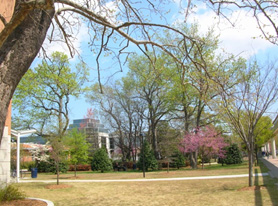
Springtime at Monarch Gardens
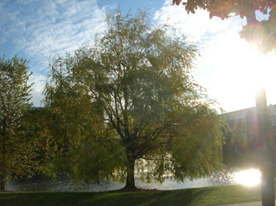
Early Autumn Morning at Oceanography Ponds
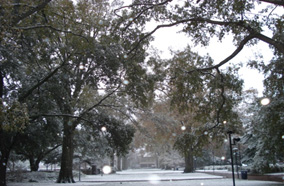
Snowfall on the Williamsburg Lawn
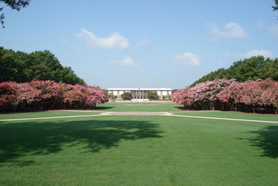
Late Summer on the Kaufman Mall
Old City Cemetery in Lynchburg hosts many notable trees, both mature and newly planted. Trees include a pecan where children swing and play, many sugar maples that are spectacular in fall color, an allee of Atlantic whitecedar, a large grove of sassafras, a serviceberry, and a 10 year-old weeping willow that appears to be 100 years old! The newly planted trees - and there are several hundred of them - reflect many unusual or old-fashioned varieties which are rare by today's standards. All of the trees in the 26-acre cemetery arboretum are botanically labeled and are listed in our free Horticultural Guide booklet. Old City Cemetery is a Virginia Historic Landmark on the National Register of Historic Places. Located at 401 Taylor Street, the gates are open daily from dawn to dusk and admission is free.
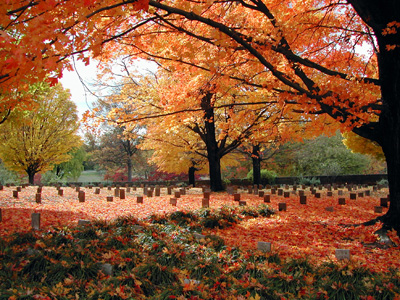
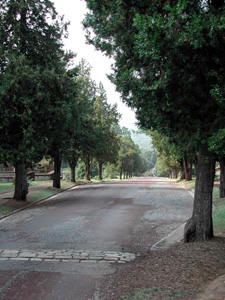
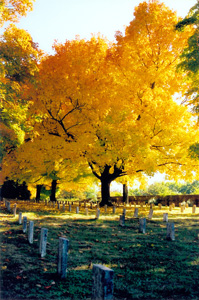
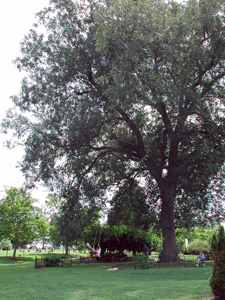
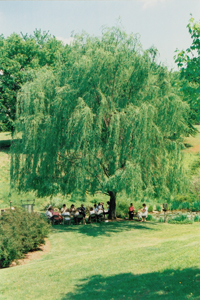
Located in the Deerfield Ranger District of the George Washington National Forest, Ramsey's Draft has long been known for its old-growth stands (~450 years old) of eastern hemlock. Today, most of those hemlocks are dead, killed by the hemlock wooly adelgid, an introduced aphid-like insect pest. Though dead, some of the old hemlocks are still standing, and make for a remarkable sight. Intermixed with old hemlock are living, large white pine, tuliptree, yellow birch and red oaks. The once state champion hemlock is pictured here in 1995, along with a grove of standing dead hemlocks from the same site in 2006. These pictures were taken on the east side of Ramsey's Draft, immediately below where it joins Jerry's Run.
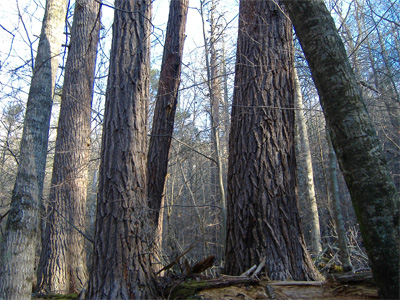
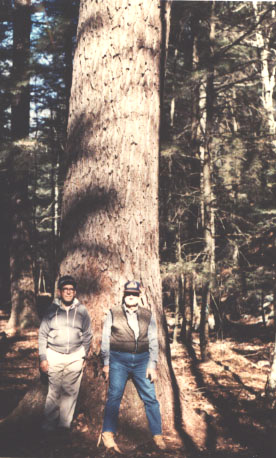
Ridgeview Park is 85 acres split by the south river and is geographically located in the heart of Waynesboro . The park consists of open savannahs and swaths of shade created by the towering shingle oaks. Since 1995 we have been reforesting the park with new and useful trees for the public to enjoy. Attached is a sampling of some of Ridgeview Parks great trees! Ridgeview Park is also the location of the Waynesboro Plant Health Care for Urban Trees Workshop, which educates professionals about better tree care.
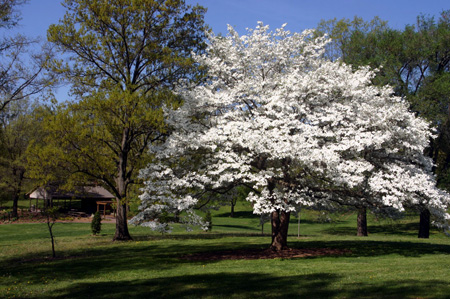
The campus of Sweet Briar College contains some of the best examples of old-growth white oak forest on the Virginia piedmont. The value of the forest has been recognized by several forest and tree experts, including William Martin (Kentucky ), Robert Leverett (Eastern Native Tree Society) and others. Professor A.E. Radford, a well-respected professor of botany at the University of North Carolina, used to bring his classes to this forest and considered it to be "the best white oak forest seen in the Piedmont." A Sierra Club Naturalist's Guide: The Piedmont (1980) included it as one of twenty-nine unique deciduous habitats found from New Jersey to Georgia. All the trees in large areas were completely mapped for scientific research in the 1980s and again in the 1990s. The campus trees are also distinctive. The grounds of the President's House (Sweet Briar House) were originally planted by Elijah Fletcher in the 19th century. They have been rejuvenated by the Garden Clubs of Virginia and are now on the spring garden tour.
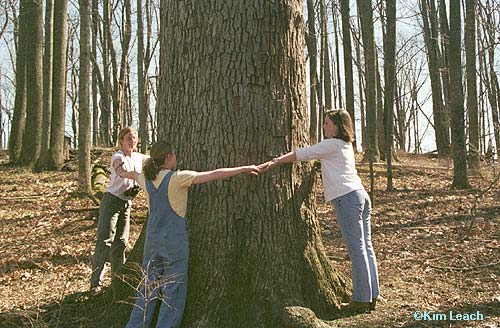
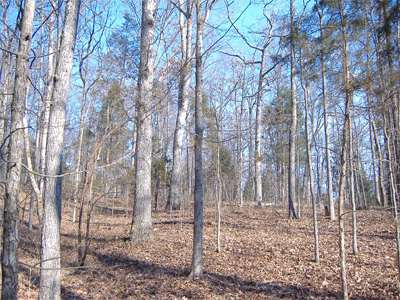
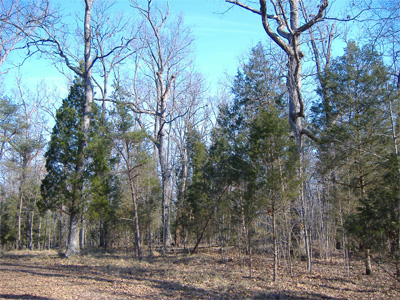
Veterans Memorial Park is a 13 acre site just north of Exit 17 in Abingdon. It has recently been designated as an arboretum and is growing trees planted in memory or in honor of U.S. military veterans. On its north side, the park has a satellite research plot of Dr. Bonnie Appleton's utility line arboretum and also a grove of the new American chestnuts. A large section of the park holds stately old trees that watch over children playing on playground equipment or sleigh riding during winter snowfalls. The park is in the process of developing a conceptual design plan that will include a walking trail and picnic pavilions. Every Memorial Day and Veterans Day, services are held in the park to commemorate and honor those who have served in the military and have given their lives in the defense of freedom.
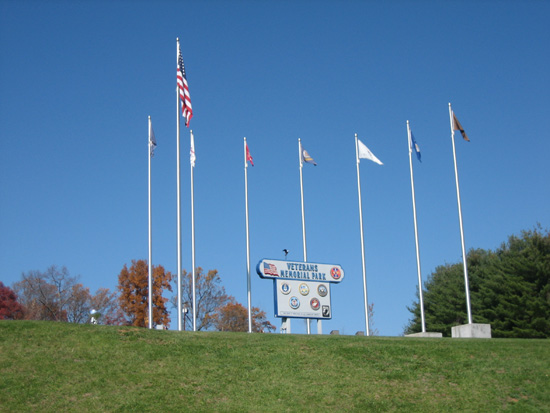
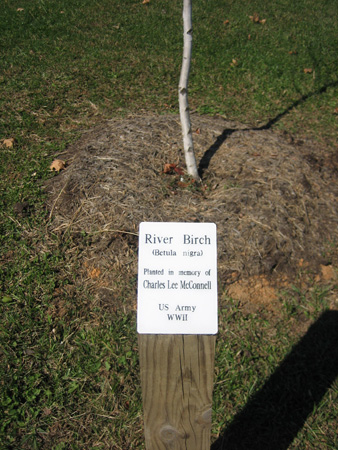
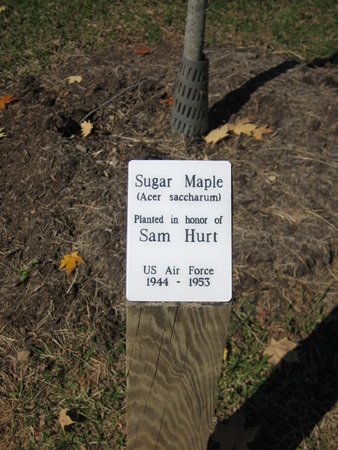
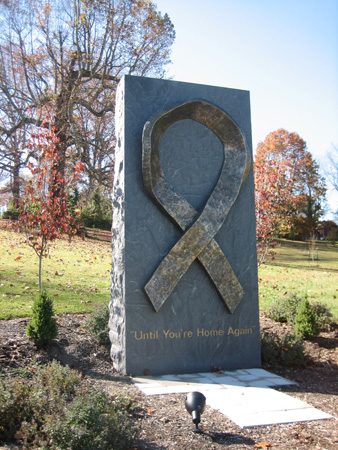
The Virginia Tech campus was never more beautiful than the days following the tragedy on April 16, 2007. With communication satellites beamed in from all over the world, here is what we saw.
Black willow at the duckpond
Empty nest on the drillfield
Yellow-poplar near Norris Hall
Satellite dishes up close
Bur oak on the drillfield
American elm behind Eggleston